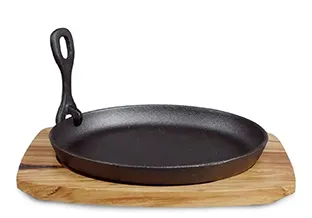
Enhancing Quality Standards in Wok Production for Optimal Performance and Durability
The Quality of Wok Cooking A Culinary Journey
When it comes to culinary art, the quality of the tools we use plays a crucial role in determining the outcome of our dishes. One such indispensable tool in Asian kitchens, particularly Chinese cuisine, is the wok. The wok, characterized by its deep, rounded shape and versatile cooking capabilities, has become an iconic symbol of Asian cooking. However, the quality of a wok can significantly influence the cooking experience and the taste of the food prepared in it. This article explores the significance of quality in wok cooking, its historical context, material considerations, and tips for maintaining a high standard in your culinary endeavors.
Historical Context of the Wok
The wok has a rich history that dates back to ancient China, over 2,000 years ago. Originally used for steaming and boiling, the design of the wok evolved into the frying pan we know today. The unique shape allows for quick and even heat distribution, making it ideal for high-heat cooking techniques such as stir-frying, deep-frying, and braising. Chefs and home cooks alike have relied on the wok to create everything from simple vegetable dishes to complex stir-fries that burst with flavor. Its versatility is a testament to why the wok remains a staple in kitchens worldwide today.
Material Considerations
The quality of a wok primarily hinges on its material. Traditional woks are typically made from carbon steel, cast iron, or non-stick materials. Each of these materials has its unique properties that can affect the cooking process.
1. Carbon Steel A favorite among professional chefs, carbon steel woks are lightweight and heat quickly. They develop a natural non-stick surface when seasoned correctly. This versatility makes them ideal for high-heat cooking. However, they do require maintenance to prevent rusting and sticking.
2. Cast Iron Cast iron woks excel in heat retention and even cooking. They are excellent for simmering and slow-cooking, giving dishes a rich flavor. However, they are heavier and require special handling to prevent chipping and rust.
3. Non-stick Non-stick woks are convenient for those who prefer easy cleanup and minimal oil usage. However, they might not withstand high heat as effectively as carbon steel or cast iron, potentially compromising the 'wok hei' – the unique flavor imparted by high-heat cooking.
Choosing the right material based on your cooking style and preferences is essential in ensuring the quality of your wok cooking.
quality wok

The Importance of Proper Techniques
Even with the highest quality wok, the cooking technique plays a pivotal role in the quality of the final dish
. Proper stir-frying techniques are critical. It is essential to preheat the wok adequately, which allows for that quick flash of heat that seals in flavors and textures. Ingredients should be prepared and organized in advance to ensure a smooth cooking process, as stir-frying is a fast-paced cooking method.In addition, using the right amount of oil is crucial. It should be used sparingly, focusing on maintaining high temperatures without making the dish greasy. The right order of adding ingredients—starting with what takes longer to cook—ensures an even, delectable result.
Maintenance for Longevity
To ensure the quality and longevity of your wok, proper care is vital. Here are some tips to maintain your wok's condition
1. Cleaning After cooking, avoid using soap on your carbon steel or cast iron wok, as it can strip the seasoning. Instead, use hot water and a soft sponge or brush for cleaning. Dry it thoroughly to prevent rust.
2. Seasoning Regularly seasoning your wok will enhance its non-stick capabilities and protect it from corrosion. A thin layer of vegetable oil applied after cleaning will suffice.
3. Storage Store your wok in a dry place, and if stacking with other cookware, place a paper towel between to avoid scratching the surface.
Conclusion
In conclusion, the quality of a wok is paramount for anyone who enjoys Asian cuisine. From its historical roots to the importance of materials and cooking techniques, a well-maintained wok not only enhances the cooking experience but also elevates the flavors of your culinary creations. Investing time in understanding and caring for your wok can make a world of difference in your kitchen, leading to outstanding dishes that delight the palate and nourish the soul. Whether you’re a novice or an experienced chef, embracing the quality of wok cooking will undeniably enrich your culinary journey.
-
Season Cast Iron Perfectly with GPT-4 Turbo TipsNewsAug.01,2025
-
High Quality Cast Iron Cookware - Baixiang County Zhongda MachineryNewsAug.01,2025
-
Premium Cast Iron Pan: Durable & Perfect HeatNewsAug.01,2025
-
High Quality Kitchen Durable Black Round Cast Iron Cookware Pancake Crepe Pan-Baixiang County Zhongda Machinery Manufacturing Co., Ltd.NewsAug.01,2025
-
Cast Iron Cookware - Baixiang County Zhongda Machinery | Nonstick, Heat ResistanceNewsAug.01,2025
-
High Quality Kitchen Durable Black Round Cast Iron Cookware - Baixiang County Zhongda Machinery | Non-Stick, Heat Retention, DurableNewsJul.31,2025


